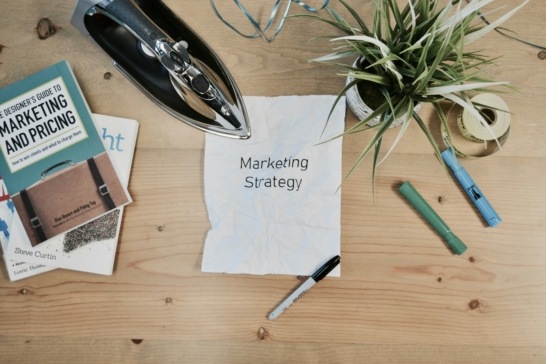3 September 2021
The COVID-19 pandemic wasn’t devastating to every exporter. True, it forced export industries across the board to reevaluate their business practices. But some exporters fared much better than others.
The enterprises best equipped to ride out such violent upheavals are always those with proven approaches that, in the long run, provide comfort, stability, and hope. Ideally, these practices should be in place long before the beginning of a crisis. When bad times arrive, well-prepared companies simply have to keep their path and trust their methodology.
Fortunately, the steps successful exporters take aren’t secret. Others companies are free to put them to good use. Let’s look at a few of the biggest lessons readily available from some of the world’s top exporters.
Use a long-term contract model.
Russia’s Gazprom Export LLC has to weather the volatility of gas prices. However, its CEO, Elena Burmistrova, has confidence that its strategy of using a long-term contract model will help the company outlast any momentary market turbulence.
She sees it as a way to calm investors’ fears since it makes possible long-term planning. She points to the volatility of spot indices toward which she noted suppliers had been edging as evidence that too many people think of the short term. But Gazprom has preferred to play the long game.
The company’s long-term contracts can ride out the turbulence of the here-and-now. An example is Gazprom’s arrangement to supply gas to the German market.
Gazprom supplies pass through Austria’s OMV Gas Marketing & Trading GmbH, an established partner. In late 2020, the companies signed a long-term agreement to supply Germany, the world’s chief consumer of Russian gas, with Gazprom’s product for many years to come.
How many years is the contract? Neither company specified, but if previous contracts are any indication, the terms could be generational. For example, in June 2018, the two companies marked the 50th anniversary of a deal that brought Russian gas to Austria. Later that month, they extended the arrangement until 2040.
In 2020, Gazprom also inked a deal with Mytilineos of Greece for the Grecian market. The industrial group is a powerhouse in the world of Greek power and gas. That contract doesn’t expire until 2030.
Concentrate on your strengths
India’s 2021 Economic Survey advised the country to model its export plan after that of Bangladesh. And precisely what is it that little Bangladesh does that giant India might do well to imitate? Bangladesh directs the majority of its efforts to export its best-performing products.
For example, since 2015, 90% of Bangladesh’s exports are connected to just five commodities. However, India’s five most significant export commodities account for only 40% of that country’s total exports.
The survey felt that the concentration on its strengths helps explain Bangladesh’s outstanding success in recent years. Bangladesh’s compounded annual growth rate for its exports was 8.6 % during 2011-2019. In contrast, India posted 0.9%. The global score was 0.3%.
Even when considering duty concessions enjoyed by Bangladesh as a recognized least developed country, the growth rate is still remarkable. And, obviously, an achievement that Indian economists believe their country should emulate.
Continuously export
UK business leaders believe that there could be more top echelon exporters if companies commit to exporting throughout the year. According to a report released by Lloyds Bank Commercial Banking and Aston Business School, most of its exporting is done by a mere 10% of its companies. They conduct an incredible 90% of the UK’s exports.
Those top exporters are generally continuous, while most of the other companies export only intermittently. Unlike the big names, the lesser exporters are also prone to switch export markets and products routinely.
UK economics professor Jun Du said that companies benefit themselves in many ways by becoming continuous exporters besides just profits. They’re forced to investigate new ways of doing business, such as making new and varied contacts. They push themselves to innovate and increase productivity.
Form partnerships
As the world’s complexity increases, it becomes less common to see one company singlehandedly tackling a multi-headed international problem. Partnerships are the norm.
A case in point is Australia’s goal of becoming the leading exporter of hydrogen by 2030. Instead of achieving that goal alone, Australia’s national science agency, the Commonwealth Scientific and Industrial Research Organization (CSIRO), has formed a Hydrogen Industry Mission. Thus far, the venture has slated A$68 million (US$53 million) toward over 100 projects that involve government, educational, and manufacturing entities.
Aviation giant Boeing along with rival carmakers Toyota and Hyundai, are all aboard. So are Swinburne University and the Department of Industry, Science, Energy, and Resources.
Dr. Larry Marshall, the head of CSIRO, said that Australia could only become a leader in hydrogen export with the Team Australia cooperation of both those with commercial export industry expertise and those with scientific research abilities. For example, one of CSIRO’s partnerships is a A$20 million deal with Fortescue Metals Group to initiate new technologies.
Stay ahead of the market.
The yearly demand for the alloy ferroniobium is roughly 110,000 mt. Yet, in 2021, Brazil’s CBMM expanded its capacity to produce 150,000 mt. The expansion cost the company $555 million.
This move came after the market’s shrinking due to the pandemic. In 2020, CBMM exported roughly only 72,000 mt.
However, the company’s spokesperson said that CBMM is betting that the market will rebound and demand will exceed previous years. The alloy is crucial in both the manufacture of semiconductors and automobiles.
CBMM is the number one producer of ferroniobium and the raw material niobium oxide. The company is also located in the country with the largest known reserve of niobium. However, CBMM isn’t waiting for competitors to figure out how to catch up. It’s determined to stay ahead of not only the competition but the market.
Learn even more from export industries
The top business leaders know the value of continually learning and keeping abreast of the latest in their industry. Kompass helps keep businesses up-to-date with international trade through the expertise of our experts in 70 countries.
Our business portal includes more than 40M companies representing all of the B2B industries. You can browse by industry or use our classification system to drill deep for specifics. Contact us today and discover how much easier it is for export industries to construct robust supply and value chains using our innovative B2B solutions.












Comentarios
No Comments